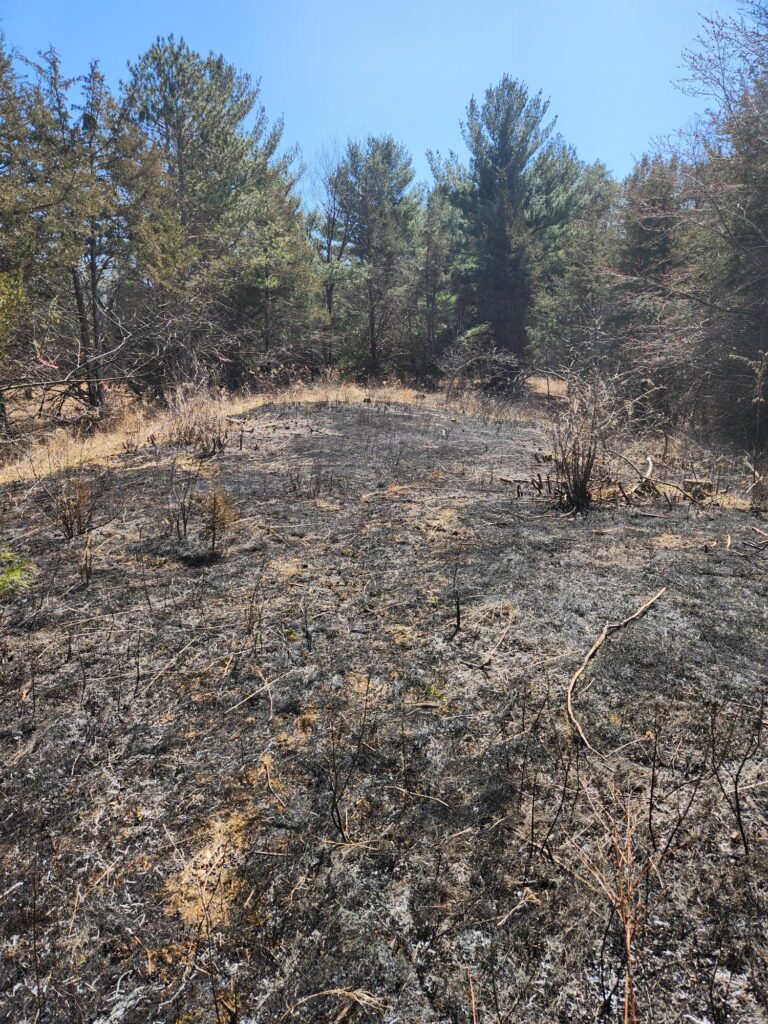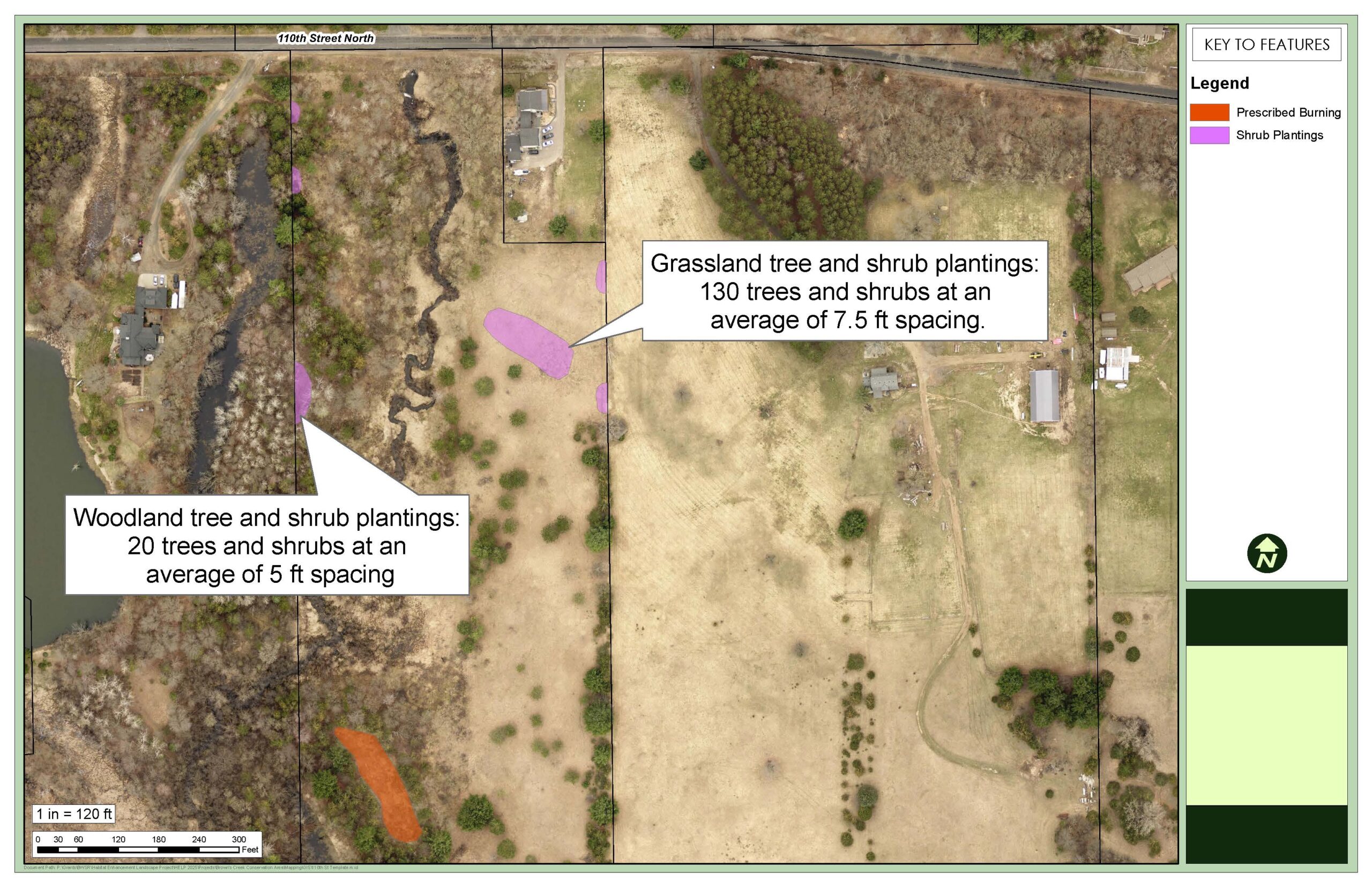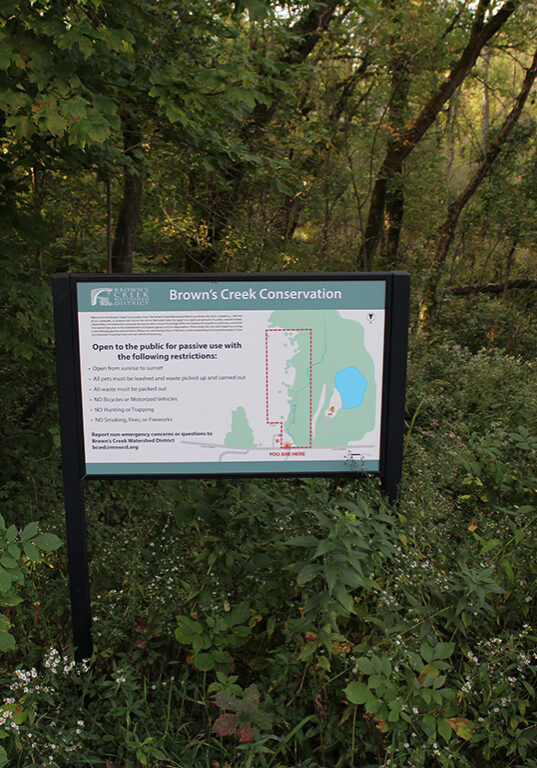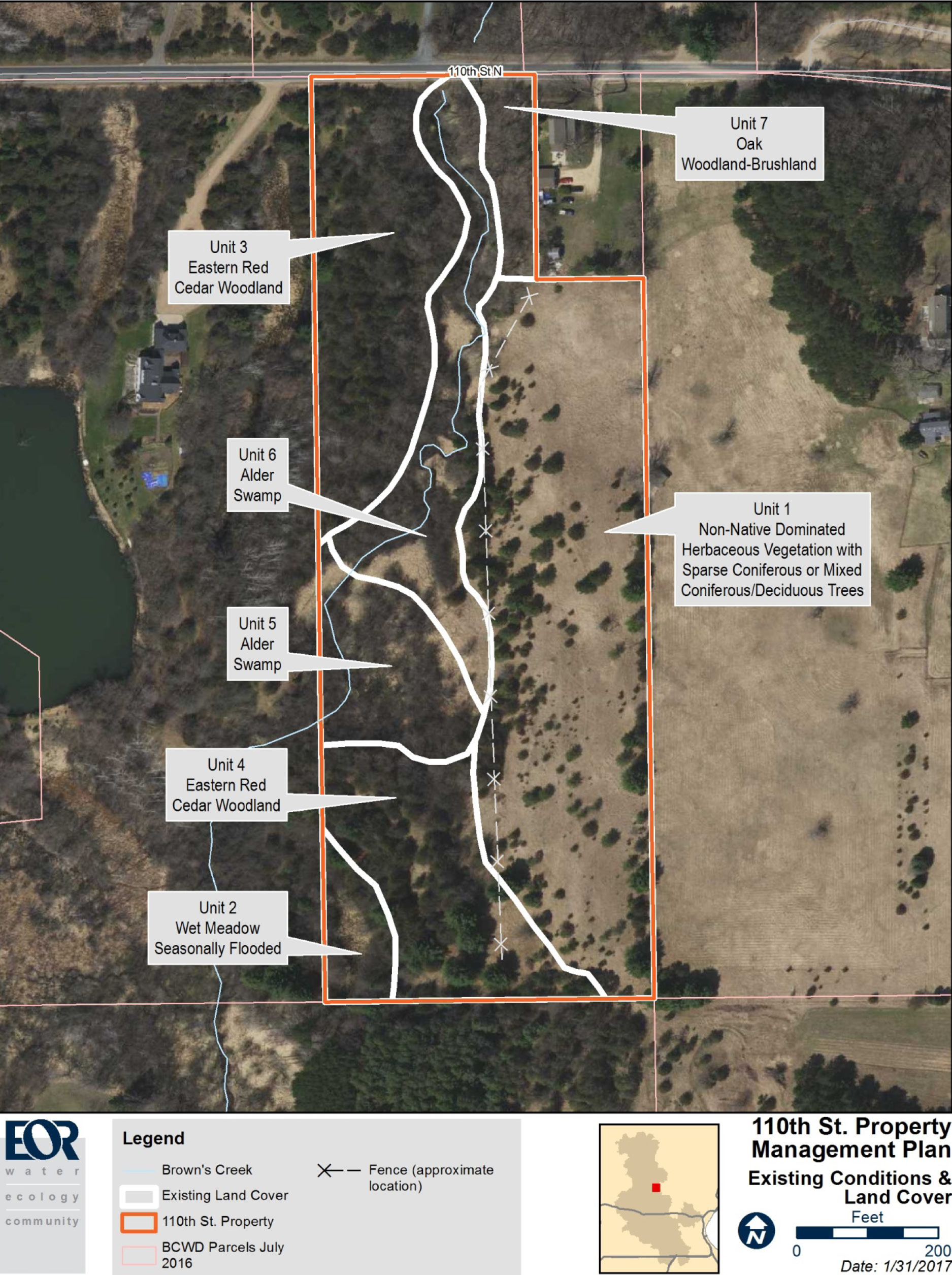In collaboration with Washington County’s Land and Water Legacy Program, the Brown’s Creek Watershed District identified an undeveloped parcel within the county’s Brown’s Creek Central Priority Conservation Area. The parcel is in the city of Grant, containing 1,300 feet of Brown’s Creek and 2.4 acres of wetland.
In January 2017, Washington County purchased a conservation easement on the property to protect existing wetlands and Brown’s Creek, and then it was bought by the BCWD to maintain and manage. BCWD was responsible for completing both a natural resources management plan and a usage plan for the property. Input was gathered from the public on how to manage the property in the spring of 2017, and in the summer of 2017, the board discussed the public input and determined the property would be actively managed for protection and restoration of the natural resources and allow infrequent passive recreation without trails or facilities. In October 2017, a management plan was adopted for the newly named “Brown’s Creek Conservation Area.” Boundary signage exists around the perimeter of the property, with a larger informational sign near the entrance, and biological surveys and restoration work have been actively occurring in the years since BCWD purchased the property.
Management Plan
The Brown’s Creek Conservation Area Management Plan was adopted to attain BCWD’s goal to create an example of quality natural habitat and stewardship while restoring the ecology of the area back to the woodland, wetlands, and prairie that existed prior to invasive species and land degradation.
This management plan is intended to be used as an adaptive management plan with the objective of controlling invasive species, restoring a diverse assemblage of native species and enhancing the overall ecological value of the property.
The entire property was divided into seven different units representing specific land cover with different management needs. Native seed mixes were identified for restoring and enhancing each management unit. Key management plan activities include the following:
- Prairie Restoration – Unit 1
- Woody Invasive Control – Units 2-7
- Red Cedar and Pine Management – Units 3-4
- Native Sapling Identification and Protection – All Units
- Acorn Harvesting – Unit 7
A 10-year implementation and maintenance plan was been developed to achieve the desired natural resource outcomes. To promote & maintain the desired floristic diversity and quality, maintenance tasks and inputs will still be required after the 10-year plan is executed, but cost will be substantially reduced after this establishment period.
Biological Surveys
Biological surveying began with an initial site assessment by EOR in prior to any restoration work. After the initial assessment, surveys have been conducted regularly by members of the BCWD Citizens Advisory Committee (CAC) to assess the plants and animals present. The CAC surveys involved meander surveys at 1-2 week intervals from April to August to cover as much of the growing season as possible. Notably, Jyneen Thatcher has been conducting plant surveys throughout the growing season, and George Vania has been conducting bird surveys to best identify migratory birds in spring and fall, as well as those species that may be nesting locally. All CAC members are welcome to assist in the surveying efforts. A trail cam has also been installed on-site to take photos of wildlife.
The plant surveys after the start of restoration activities documented an initial shift in the vegetation, following the changes to the habitat. The increased sunlight where dense clusters of evergreens were removed resulted in a flush of weedy growth and suppression of some of the shade loving plants. Monitoring since 2018 has shown the emergence of more prairie species, especially in Unit 3.
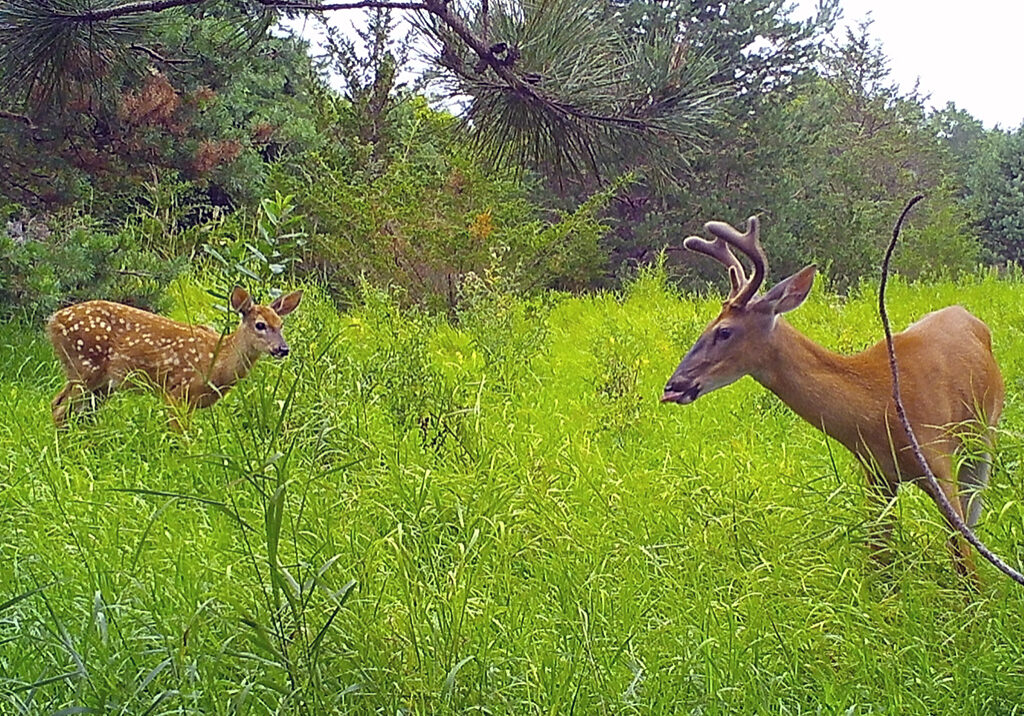
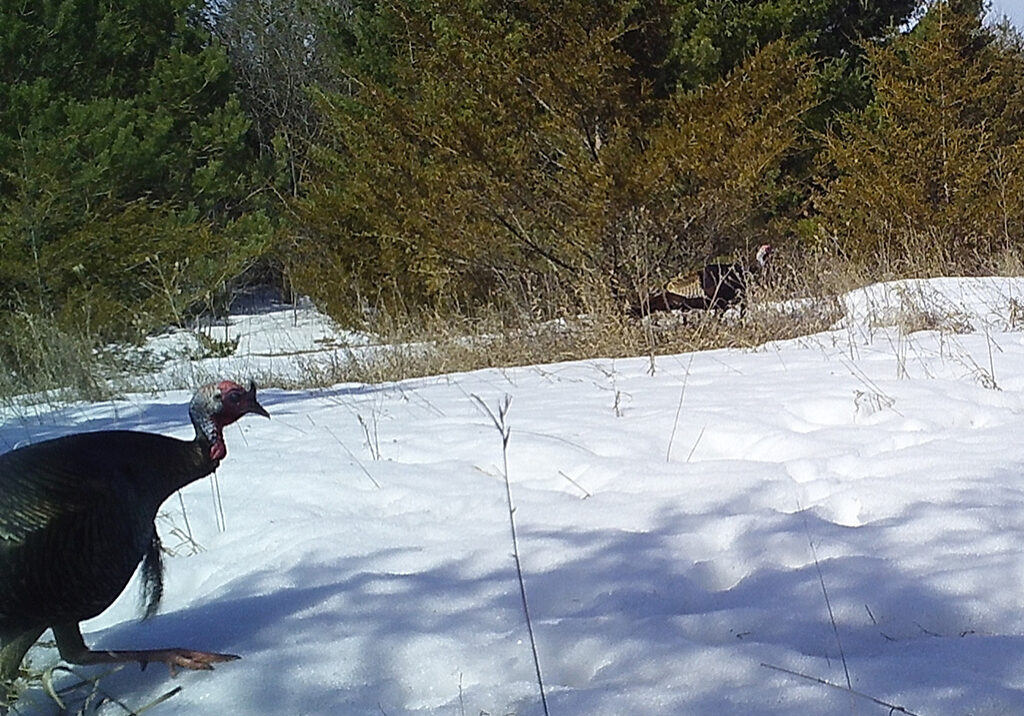

Great River Greening Grant Work
The BCWD worked with Great River Greening on a 5-year grant for restoration work from July 1, 2018 to June 23, 2023. This grant allowed for $52,000 worth of prairie, wetland, and woodland restoration. Prairie Restorations, Inc. was contracted to assist with the restoration work.
Key Accomplishments
- 2018 signage installation
- 2019 tree survey
- Creation of database for biological surveying
- Identification of a species tracked by the Minnesota DNR and collection of seed capsules for study by the Minnesota Landscape Arboretum Plant Conservation Program
- 2022 seeding of native grasses and oats into the bare ground on the spots from the burning of large woody materials to minimize erosion potential
Invasive Species Management
- Spraying of Dame’s rocket (Hesperis matronalis)
- Removal of Woody Invasives (buckthorn removal, cedar thinning, and large conifer limbing)
- Hand/chain saw/brush mower and burn piles
- Follow-up foliar buckthorn treatments and stump cutting
- Cutting of cedar saplings
- Mechanical removal of Lamium, Mullein, thistle, Lily of the Valley
- Follow up foliar treatment of mullein rosettes
- Hand pulling of garlic mustard patch
- Mowing of weedy annual species
After the grant funds were used up, additional activities in 2023 included spreading native seeds and sending soil samples from the burn scar areas for nutrient analysis to guide future restoration. 2024 and 2025 plans include continued invasive species management and planting additional trees and shrubs in select locations for water quality improvements and pollinator and bird habitat enhancement.
2025 - 2026 HELP Grant Work
Continued restoration of the Brown’s Creek Conservation Area is one of 12 projects receiving funding through the Washington Conservation District’s 2025 Habitat Enhancement Landscape Program (HELP) grant award. HELP is focused on restoring and enhancing strategically located, diverse native habitat across Minnesota to benefit populations of pollinators and beneficial insects as well as overall plant and animal diversity. Brown’s Creek Watershed District is partnering with the Washington Conservation District to enhance woodland and prairie habitats through prescribed burns and native shrub plantings.
Prescribed Burn
The BCWD worked with Edge Ecosystems to burn approximately 0.17 acres of existing prairie in Unit 4 of the Brown's Creek Conservation Area in April 2025. The goal of the burn was noxious weed control and restoration maintenance.
Tree and Shrub Plantings
The HELP grant will also be supporting tree and shrub plantings which are likely to take place in spring 2026 with the help of volunteers. We will be planting about 130 grassland trees and shrubs at an average of 7.5 ft. spacing and about 20 woodland trees and shrubs at an average of 5 ft. spacing.
